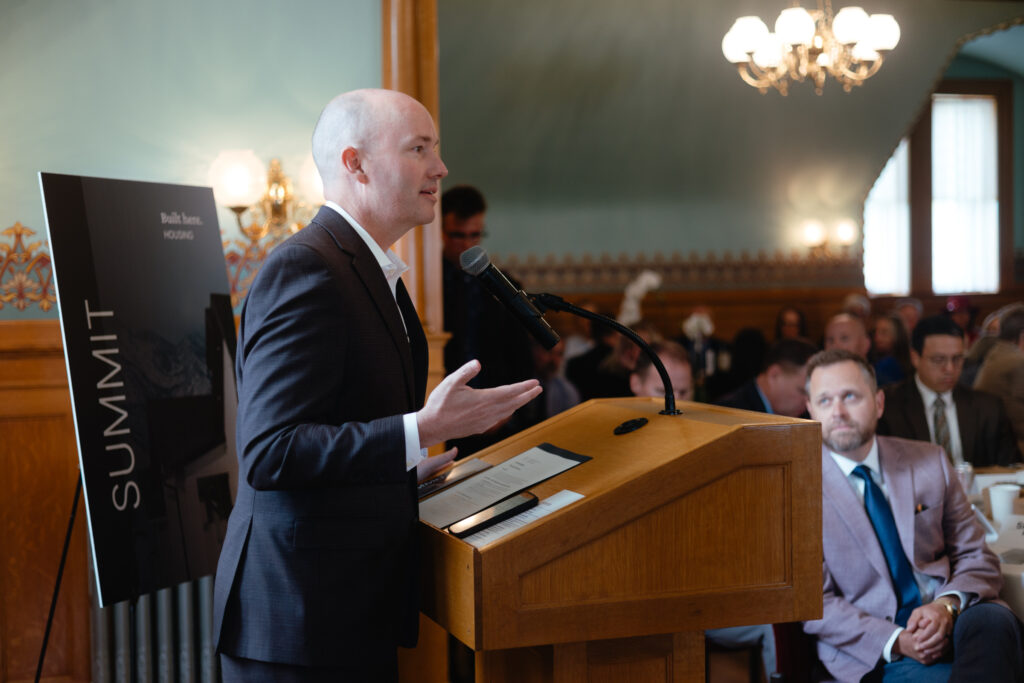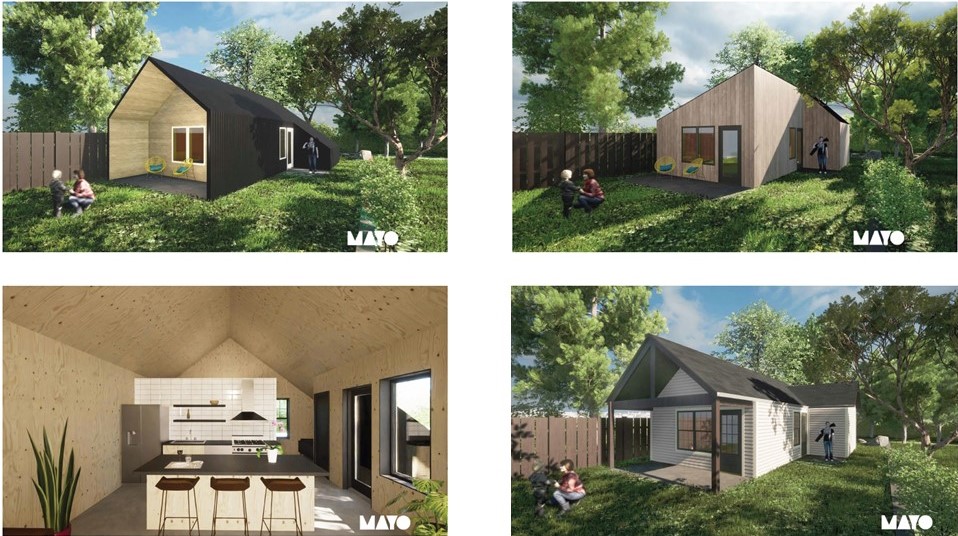Task Force releases Action Plan to give states and localities innovative tools to combat housing crisis

- Resources
Median home prices in the U.S. have jumped nearly 50% since 2019, making it harder and harder for first-time homebuyers to enter the market. At the same time, almost one-third of U.S. households are cost-burdened, spending over a third of their income on rent/mortgage plus utilities and risking homelessness as cost of living rises.
The White House and Congress are poised to carry out the most sweeping restructuring of federal housing policy in decades. Proposals include the transition of rental housing assistance from direct appropriations to block grants, establishment of work requirements, expansion of the Low-Income Housing Tax Credit, continuation of the Opportunity Zones program, and more.
State and local leaders must act quickly and decisively to implement their own solutions to the housing crisis. After nearly 12 months of work, the National Housing Crisis Task Force, convened by Accelerator for America and Drexel University’s Nowak Metro Finance Lab, has released its State and Local Housing Action Plan to serve as a guide for state and local leaders to create housing solutions in their jurisdictions and reduce reliance on federal support.
The Task Force is led by Co-Chairs, Utah Gov. Spencer Cox, Cleveland Mayor Justin Bibb, Atlanta Mayor Andre Dickens, and Susan Thomas, President of Fifth Third Community Development Corp. Its membership includes 28 practitioners from across the country, representing a broad range of perspectives within the housing ecosystem.
 Gov. Spencer Cox gathered local elected officials and state policymakers in Utah to discuss the housing affordability crisis in his state and nationally.
Gov. Spencer Cox gathered local elected officials and state policymakers in Utah to discuss the housing affordability crisis in his state and nationally.
“The housing crisis is making it harder for families to put down roots, for workers to live near jobs, and for young people to build a future. This Action Plan gives state and local leaders practical, tested tools to build more housing and make it attainable for the people who need it most. We can’t afford to sit back and wait for federal solutions. The time to act is now,” said Utah Gov. Spencer Cox.
The State and Local Housing Action Plan highlights 15 innovative tools across the five segments of the housing ecosystem: land, capital, construction, regulation and policy, and governance. Any tool, when paired with other tools from the Action Plan, should be complementary; when implemented together, their impact is amplified. Implementing five tools simultaneously — one from each segment — should have a catalytic impact in a region.
“Cities have more power and more opportunity than they might realize. In Atlanta, we are bringing everyone to the table, using our collective resources to produce high-quality affordable housing that serves as the cornerstone of whole, healthy neighborhoods,” said Atlanta Mayor Andre Dickens. We encourage communities across the country to adopt our ‘Group Project’ approach to housing challenges and adopt these proven, actionable tools laid out in the State and Local Housing Action Plan.”
Cleveland Mayor Justin M. Bibb noted that supporting housing development is not just about uplifting a particular industry. “Housing is not just a market — it’s a moral imperative and the foundation of opportunity. As a co-chair of this Task Force, I’m proud to help drive a national response that centers equity and expands access to safe, affordable housing for all. From innovative strategies to house unsheltered residents to modular construction and permitting reform, we’re equipping local leaders with tools that meet the urgency of this moment.”
The Task Force released the first five tools in March and the second set of tools in May. Tools in the plan were refined with input from 28 Task Force members and over 50 practitioners and policymakers. Interviewees included developers, tenant advocates, financial institutions, public housing authorities, and elected officials, among others.
 Mayor Justin M. Bibb and former HUD Secretary Henry Cisneros, a Task Force member, joined other leaders and housing practitioners in Cleveland in May.
Mayor Justin M. Bibb and former HUD Secretary Henry Cisneros, a Task Force member, joined other leaders and housing practitioners in Cleveland in May.
The Action Plan uplifts the most promising and scalable solutions from cities and states across the country and shows that state and local governments have more power than they realize, more capital to deploy, and more capacity than previously utilized. This includes billions of dollars raised annually through housing finance agencies, housing trust funds, revolving loan funds, and public development agencies to support housing development, preservation, and mortgages. At the same time, community foundations and other philanthropies are investing in people, projects, and communities, and state, county, and local governments are innovating to speed permitting and streamline zoning and other regulatory requirements.
“The solutions to our nation’s housing crisis are out there, but they are being deployed piecemeal, in individual communities. Over the past year, the Task Force has been working to identify the best examples of innovative and effective solutions from across the country, and we hope that this Action Plan serves as a roadmap to help replicate them in communities across the country,” said Susan Thomas, President of Fifth Third Community Development Corp.
The State and Local Housing Action Plan serves as a guide to implementing the tools in the Action Plan now and a framework for how these innovations can scale more rapidly in more places. Not every part of the State and Local Housing Action Plan will make sense in each jurisdiction, but as a whole, they offer a set of policies that will enable local and state leaders from both the public and private sectors to make meaningful progress on addressing the housing crisis.
The State and Local Housing Action Plan provides a clear path forward. The Task Force urges state and local leaders to immediately review this comprehensive guide, identify the innovative tools most relevant to their communities, and begin the critical work of implementation. By acting decisively and utilizing these strategies, state and local leaders can collectively make meaningful progress in combating the housing crisis and building more stable, affordable housing ecosystems for all.
Read the full State and Local Housing Action Plan or review the individual tools below.
LAND
Public Asset Corporations: A Model for Mixed-Income Housing Development
Expanding Housing Supply: A Call for Municipal Property Advisors (In partnership with Putting Assets to Work)

CAPITAL
“Right-Sizing” Property Tax Incentives to Increase Housing Affordability
Beyond Traditional Giving: How Place-Based Philanthropy Catalyzes Housing Solutions
Unlocking Public-Private Collaboration to Speed Housing Delivery
Investing in Homeownership: Public Investments in Starter Home Development
Mixed-Income Public Development Model: Local Housing Finance Agency Innovation (In partnership with Center for Public Enterprise)

CONSTRUCTION
Pre-Purchasing to Increase Modular Construction Capacity
Building for Insurability, Resilience, Energy Efficiency, and Housing Affordability: Addressing the True Cost of Housing (In partnership with Climate Mayors)

REGULATION AND POLICY
Land Use, Permitting, and Building Code Reform: A Path Forward
Industrializing Housing Delivery in the US: Recommendations for State and Local Governments (In partnership with MOD X)

GOVERNANCE
Housing Command Centers: An Emergency Response to Homelessness
Responding to a Crisis: Lessons from Atlanta’s Housing Strike Force
Organizing Tax-Advantaged Capital for Housing and Community Development: Lessons from Opportunity Alabama (In partnership with Opportunity Alabama)

